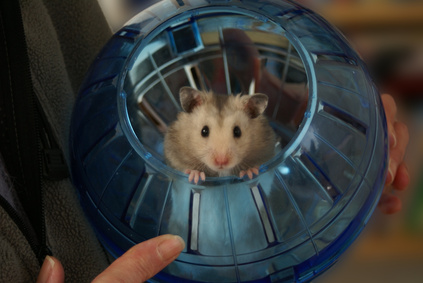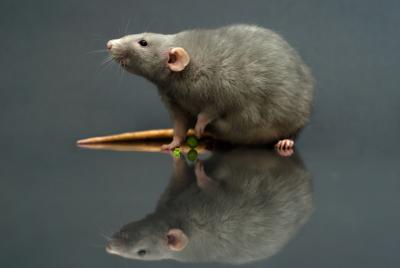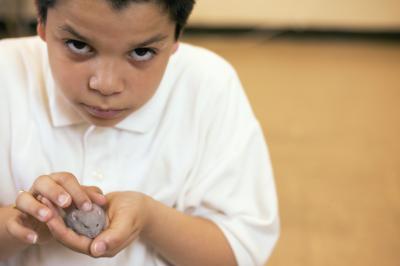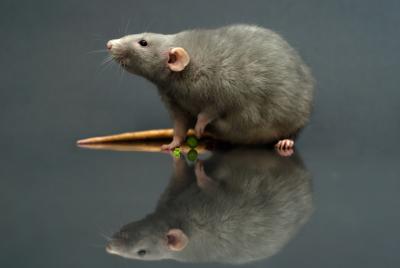Whether you've seen it first hand, heard about it or saw it on television, people and rodents in the home can become a hostile combination. Rodents get swatted by brooms, lured by baited traps and chased by the household cat. Regardless the method, most mice have to fight to stay in a home and it seems they've become a bit spiteful.
They're on the offensive! According to the Center for Disease Control (CDC), rats and mice are now known to cause more than 35 diseases worldwide-- and damage to your home.
The CDC estimates that rodents cause $2 billion worth of property damage each year, which is more than the combined damage caused by fire and windstorms. How can a mouse cause such damage? Well, when you see a mouse you can be certain to find many more. For example, a female mouse becomes sexually mature between six and ten weeks and can bear ten litters each year of at least six babies. This means that for every female you can equate potentially 70 other mice. Now, the damage seems a bit more feasible.
However, these mice also spread harmful diseases that all homeowners should take into consideration when avoiding taking care of a "few" mice in the house.
How Do The Diseases Spread?
Wild mice and rats found in homes are known to cause four diseases in particular: salmonellosis, better known as salmonella poisoning; Hantavirus Pulmonary Syndrome; Leptosporosis; and Lymphocytic choriomeningitis. Thankfully the CDC has provided information about these diseases and feasible ways to prevent and manage the rodent population in your home.
Humans contract these diseases from getting bitten, by touching infected rodents, or coming in contact with rodent waste or saliva. However, don't turn a blind eye if you don't see rodents in your home. These diseases are carried by rodents that are then transferred to ticks, mites and fleas. If you've ever had contact with any of these insects then you could also become infected with one of these diseases.
Salmonella
You may have heard about the recent egg contamination that caused many salmonella cases and a huge loss in revenue. These eggs were traced back to farms that had large manure and rodent populous in the barn beside the eggs. As a result, the eggs were being contaminated.
Now it may not seem as alarming that salmonella can actually spread through ingesting infected feces. Although no one purposefully tries to feast upon salmonella laced rodent droppings, the above case demonstrates how lackadaisical food production can become quite hazardous.
* Stats: 1.4 million people in the U.S. are infected, only 40,000 are reported, 14,800 are hospitalized, and 415 die.
* Symptoms/Reactions: Lasting 4-7 days--Diarrhea, high fever, cramping 12-72 hours after contamination.
Hospitalization is not necessary if treated immediately with antibiotics, but if hospitalized, a person's infection could be severe enough to leave the intestines and infect the blood stream to ultimately could cause death.
Leptosporosis
This bacterial disease is caused by contact with infected rodents and creates a plethora of reactions. If not treated, these symptoms will worsen and though rare, could result in death.
* Symptoms: High fever, extreme headache, chills, muscle aches, vomiting, and may include: jaundice, red eyes, abdominal pain, diarrhea, or rash.
* Worsening Symptoms: Kidney damage, meningitis (inflammation of the membrane around the brain and spinal cord), liver failure, and respiratory distress.
Lymphocytic Choriomeningitis (LCM)
This virus is found in roughly five percent of house mice in the U.S. and can be found in their waste and saliva. This disease is contagious and causes severe reactions: aseptic meningitis (inflammation of the membrane, or meninges, that surrounds the brain and spinal cord), encephalitis (inflammation of the brain), or meningoencephalitis (inflammation of the brain and meninges).
Hantavirus Pulmonary Syndrome
Although somewhat rare in comparison to these other diseases, if contracted, it can be deadly. Similar to most other rodent-borne diseases, the infection comes through contact with the rodent and/or its waste. It was first discovered in 1993 and cases have been pinpointed across the U.S.
Rodent Control
Although these diseases appear quite serious, and are, there are plenty of available preventative measures and healthy home maintenance tips.
1. No Food: Be sure to control the amount of waste at your home and that any trash is disposed of properly. Store food appropriately and keep containers closed.
2. No Room: Rodents enjoy living in stray firewood or other debris that could lie near to the home. Store materials at least three feet above the ground to prevent living space for rodents.
3. No Access: Although rodents can fit into very tight spaces, proper construction and use of materials such as metal can help prevent infestation. Cracks and any holes should be sealed.
4. No Way: If you don't want to deal with your mouse problem or you want to be certain it's handled the right way, you must contact a pest control expert.
No Mice!

 Colors & Types of Hamsters
Colors & Types of Hamsters
Colors
Colors & Types of Hamsters
Colors & Types of Hamsters
Colors
 The Effects of Moth Balls on Rodents
The Effects of Moth Balls on Rodents
T
The Effects of Moth Balls on Rodents
The Effects of Moth Balls on Rodents
T
 Can Hamsters Eat Pumpkin?
Can Hamsters Eat Pumpkin?
Can Hamsters
Can Hamsters Eat Pumpkin?
Can Hamsters Eat Pumpkin?
Can Hamsters
 The Best Way to Catch and Kill Barn Rats
The Best Way to Catch and Kill Barn Rats
The Best Way to Catch and Kill Barn Rats
The Best Way to Catch and Kill Barn Rats
 Which Animals Prey on Beavers?
Which Animals Prey on Beavers?
Which A
Which Animals Prey on Beavers?
Which Animals Prey on Beavers?
Which A